Lucio Fontana Follow Concetto spaziale signed and titled 'l. fontana "concetto spaziale"' on the reverse; further impressed with the artist's fingerprint on the reverse canvas 45 x 55 cm (17 3/4 x 21 5/8 in.) Executed in 1960.
Provenance Vismara Arte Contemporanea, Milan Galleria Seno, Milan Nello Asteria, Sirmione Private Collection, Milan Dorotheum, Vienna, 26 November 2008, lot 208 Acquired at the above sale by the present owner Exhibited Milan, Galleria Seno, Fontana , 1973, no. 27 (illustrated) Literature Enrico Crispolti, Lucio Fontana Catalogo raisonné des peintures, sculptures et environnements spatiaux, vol. II, Brussels, 1974, no. 60 B 14, p. 68 (illustrated, p. 69) Enrico Crispolti, Fontana. Catalogo generale, vol. I, Milan, 1986, no. 60 B 14, p. 237 (illustrated) Enrico Crispolti, Lucio Fontana Catalogo ragionato di sculture, dipinti, ambientazioni , vol. I, Milan, 2006, no. 60 B 14, p. 400 (illustrated) Catalogue Essay Unveiling the purity of composition, materials and space, Concetto spaziale is a visually arresting and experimental canvas from the oeuvre of the founder of post-war Spatialism. Presenting a dynamic constellation of holes, the work maps out an imaginative journey into space. At the heart of Lucio Fontana’s investigation into the sculptural qualities of painting, the present work radiates real light, space and temporality, liberating the medium from preconcieved artistic norms. Embodying the artist’s yearning for freedom, the present work is a product of Fontana’s masterful imaginings: ‘A butterfly in flight stimulates my imagination. By freeing myself from discourse, I loose myself in time and I start making holes’ (Lucio Fontana quoted in Sarah Whitfield, Lucio Fontana , exh. cat., Hayward Gallery, London, 1999, p. 12). Exposing the raw nature of the canvas, omitting paint, Fontana allows the composition to retain a purity that renders the piercings of a keenly felt violation. The perforations further blur the boundaries between painting and sculpture. Inhabiting a liminal state, Concetto spaziale exists, defies catagorisation and yet simultaneously embraces both painting and sculpture. Perforating the canvas, the artist radically broke away from the tradtional limitations of the plane, carving through space into untouched dimensions. The introduction of holes, or buchi , began in 1949 in a series that consumed Fontana’s artistic practice until 1968. Buchi , a physical celebration of the artist’s momentous discovery, appear prominently in the present work. As the artist noted, 'my discovery was the hole and that's it. I am happy to go to the grave after such a discovery' (Lucio Fontana quoted in Sarah Whitfield, Lucio Fontana , exh. cat., Hayward Gallery, London, 1999, p. 12). His pivotal buchi works paved the way for the slashed canvases of his tagli series. Influenced by advancements in science and technology, Fontana’s work mirrors this explorative step taken into the unknown. The arrangement of holes in the present lot, appearing simultaneously accidental and organised, attracts the viewer’s eye with the playfulness of a child’s dot-to-dot, whilst depicting a galaxy of unchartered territory, a new realm that the viewer is invited to dive into. In the present work the purity and exposure of the raw canvas demonstrates Fontana’s fascination with the virginal state, a fixation described by novelist and close friend Milena Marini. For Fontana the buchi reveal an unexplored space representative of conceptual purity. Nevertheless, this pilgrimage is paradoxical in its necessity to defile the canvas. By punching holes through the picture plane Fontana breaks the surface of the work enabling the viewer to perceive the space that lies beyond and enter the sublime, creating ‘an infinite dimension’ (Lucio Fontana quoted in Carla Lonzi, Autoritratto , Bari, 1969, p. 169). Pairing pure materials with the experimentation of space, Fontana’s composition recalls the experimental and perfomative raw canvases of Alberto Burri Pioneers of Arte Povera, both Fontana and Burri are distinguished by their active experimentation with the two-dimensional nature of the plane. Whilst Burri’s material realism redefined the concept of the mo
Lucio Fontana Follow Concetto spaziale signed and titled 'l. fontana "concetto spaziale"' on the reverse; further impressed with the artist's fingerprint on the reverse canvas 45 x 55 cm (17 3/4 x 21 5/8 in.) Executed in 1960.
Provenance Vismara Arte Contemporanea, Milan Galleria Seno, Milan Nello Asteria, Sirmione Private Collection, Milan Dorotheum, Vienna, 26 November 2008, lot 208 Acquired at the above sale by the present owner Exhibited Milan, Galleria Seno, Fontana , 1973, no. 27 (illustrated) Literature Enrico Crispolti, Lucio Fontana Catalogo raisonné des peintures, sculptures et environnements spatiaux, vol. II, Brussels, 1974, no. 60 B 14, p. 68 (illustrated, p. 69) Enrico Crispolti, Fontana. Catalogo generale, vol. I, Milan, 1986, no. 60 B 14, p. 237 (illustrated) Enrico Crispolti, Lucio Fontana Catalogo ragionato di sculture, dipinti, ambientazioni , vol. I, Milan, 2006, no. 60 B 14, p. 400 (illustrated) Catalogue Essay Unveiling the purity of composition, materials and space, Concetto spaziale is a visually arresting and experimental canvas from the oeuvre of the founder of post-war Spatialism. Presenting a dynamic constellation of holes, the work maps out an imaginative journey into space. At the heart of Lucio Fontana’s investigation into the sculptural qualities of painting, the present work radiates real light, space and temporality, liberating the medium from preconcieved artistic norms. Embodying the artist’s yearning for freedom, the present work is a product of Fontana’s masterful imaginings: ‘A butterfly in flight stimulates my imagination. By freeing myself from discourse, I loose myself in time and I start making holes’ (Lucio Fontana quoted in Sarah Whitfield, Lucio Fontana , exh. cat., Hayward Gallery, London, 1999, p. 12). Exposing the raw nature of the canvas, omitting paint, Fontana allows the composition to retain a purity that renders the piercings of a keenly felt violation. The perforations further blur the boundaries between painting and sculpture. Inhabiting a liminal state, Concetto spaziale exists, defies catagorisation and yet simultaneously embraces both painting and sculpture. Perforating the canvas, the artist radically broke away from the tradtional limitations of the plane, carving through space into untouched dimensions. The introduction of holes, or buchi , began in 1949 in a series that consumed Fontana’s artistic practice until 1968. Buchi , a physical celebration of the artist’s momentous discovery, appear prominently in the present work. As the artist noted, 'my discovery was the hole and that's it. I am happy to go to the grave after such a discovery' (Lucio Fontana quoted in Sarah Whitfield, Lucio Fontana , exh. cat., Hayward Gallery, London, 1999, p. 12). His pivotal buchi works paved the way for the slashed canvases of his tagli series. Influenced by advancements in science and technology, Fontana’s work mirrors this explorative step taken into the unknown. The arrangement of holes in the present lot, appearing simultaneously accidental and organised, attracts the viewer’s eye with the playfulness of a child’s dot-to-dot, whilst depicting a galaxy of unchartered territory, a new realm that the viewer is invited to dive into. In the present work the purity and exposure of the raw canvas demonstrates Fontana’s fascination with the virginal state, a fixation described by novelist and close friend Milena Marini. For Fontana the buchi reveal an unexplored space representative of conceptual purity. Nevertheless, this pilgrimage is paradoxical in its necessity to defile the canvas. By punching holes through the picture plane Fontana breaks the surface of the work enabling the viewer to perceive the space that lies beyond and enter the sublime, creating ‘an infinite dimension’ (Lucio Fontana quoted in Carla Lonzi, Autoritratto , Bari, 1969, p. 169). Pairing pure materials with the experimentation of space, Fontana’s composition recalls the experimental and perfomative raw canvases of Alberto Burri Pioneers of Arte Povera, both Fontana and Burri are distinguished by their active experimentation with the two-dimensional nature of the plane. Whilst Burri’s material realism redefined the concept of the mo
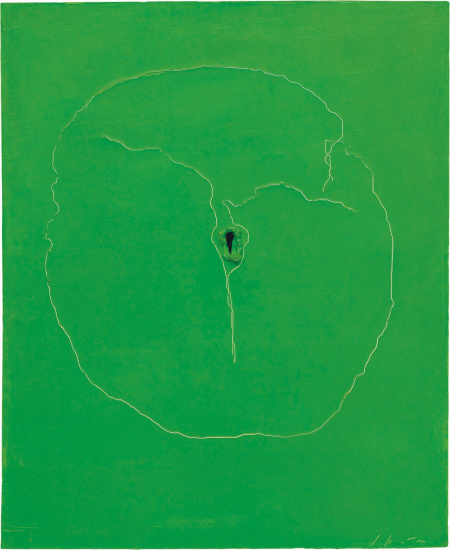
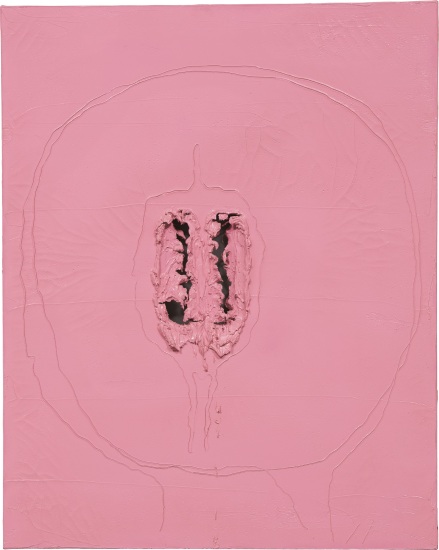
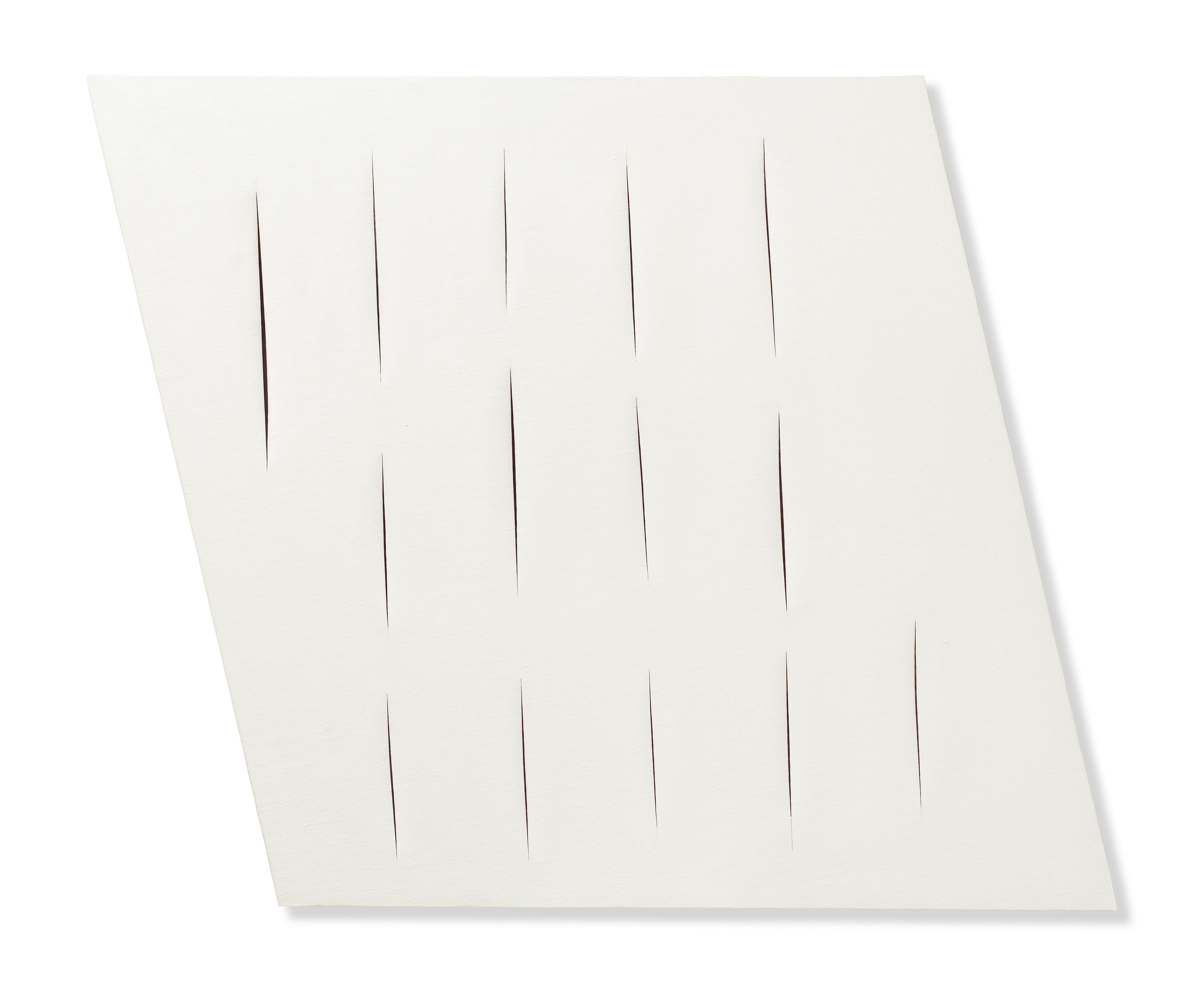
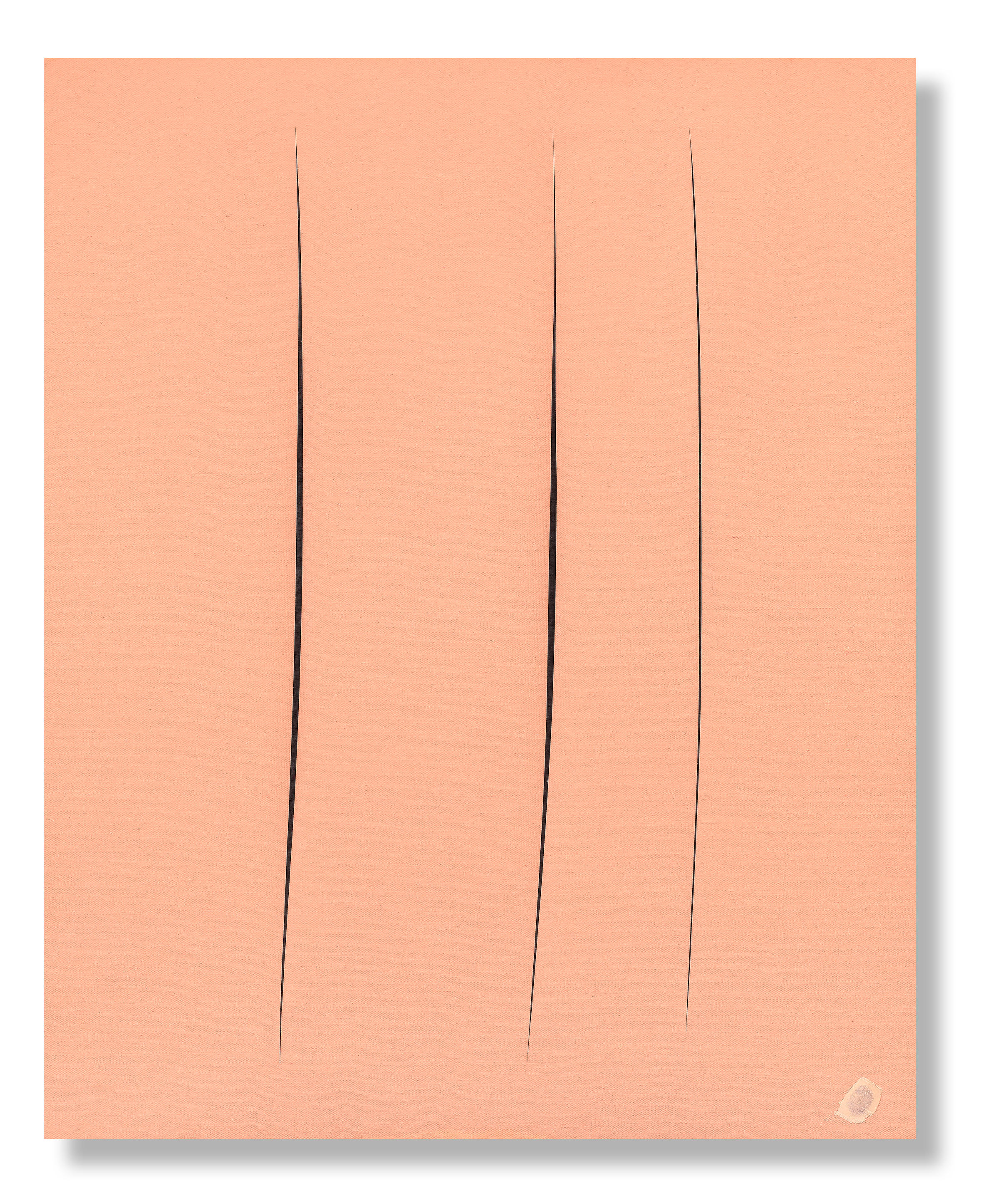
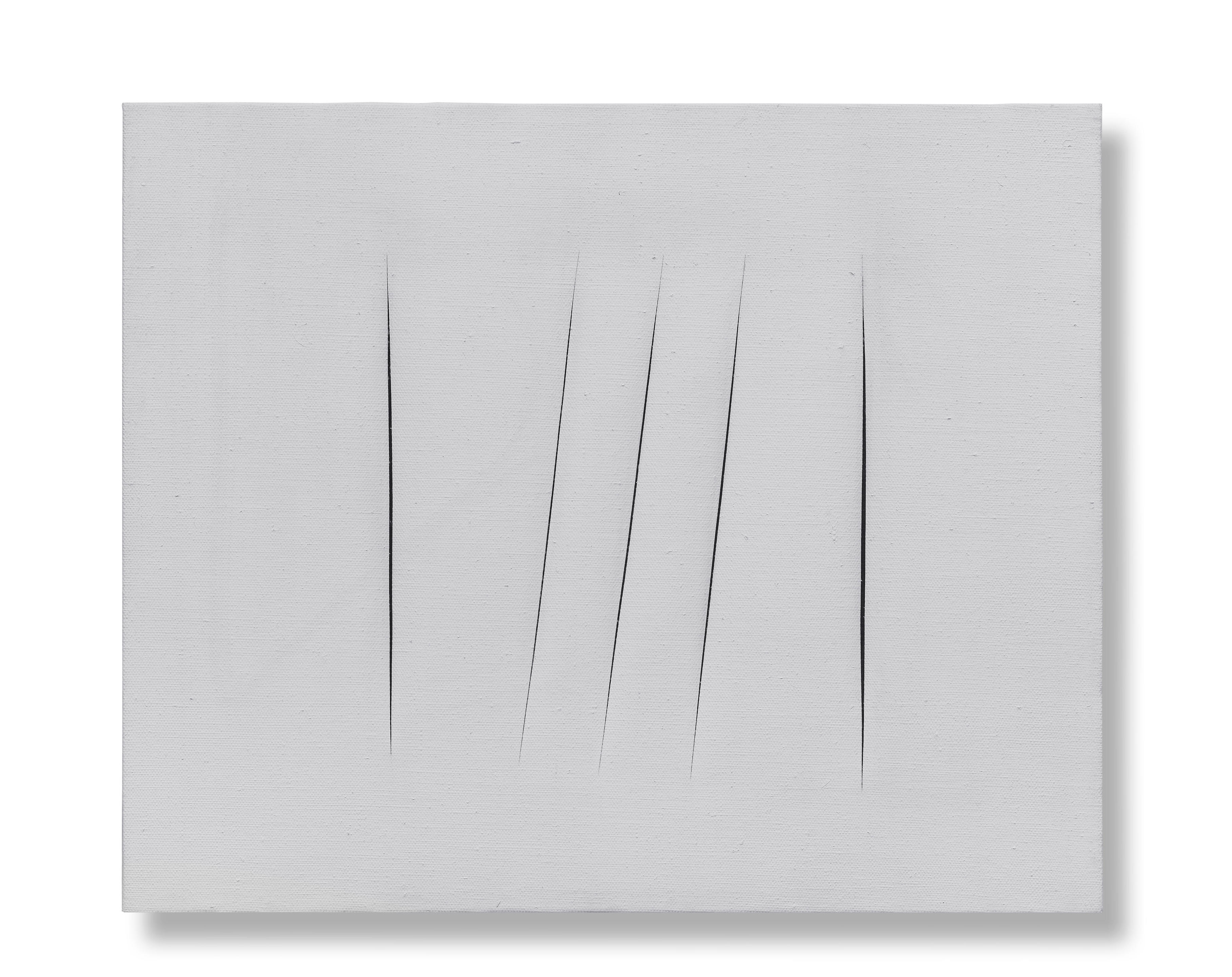


.jpg)
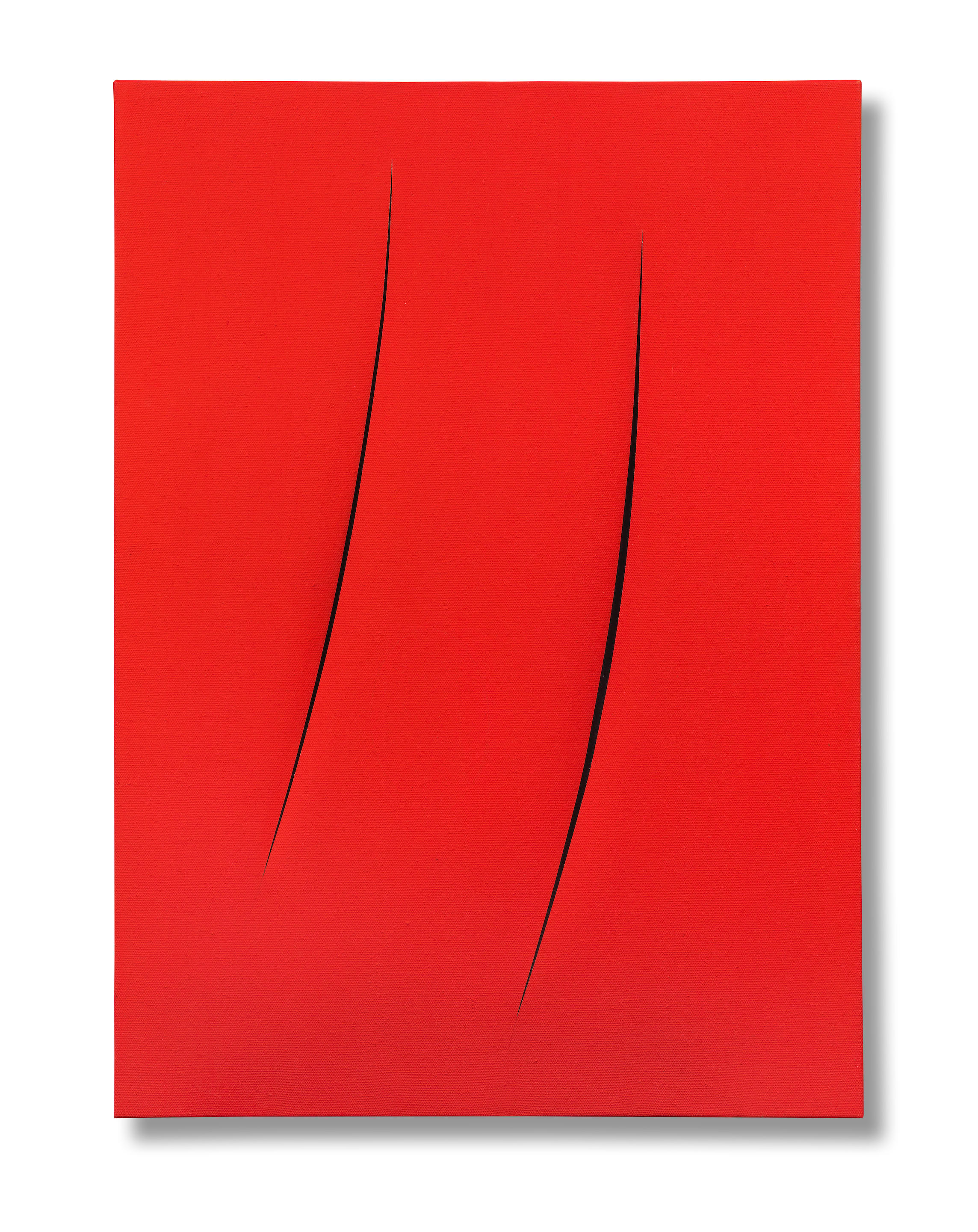
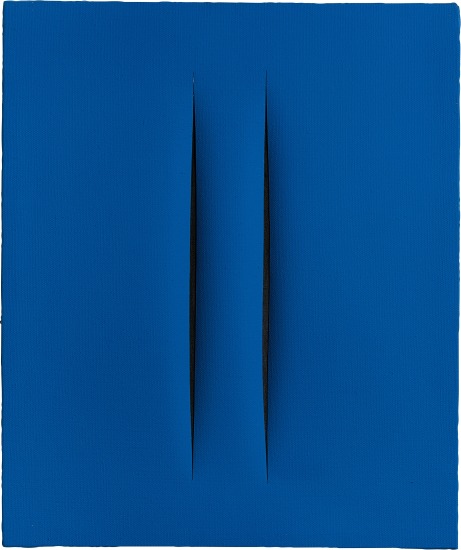
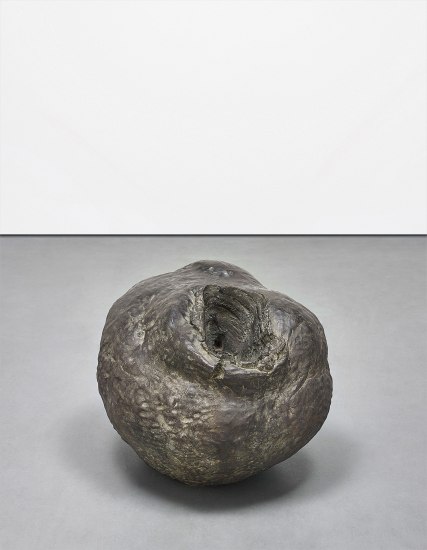

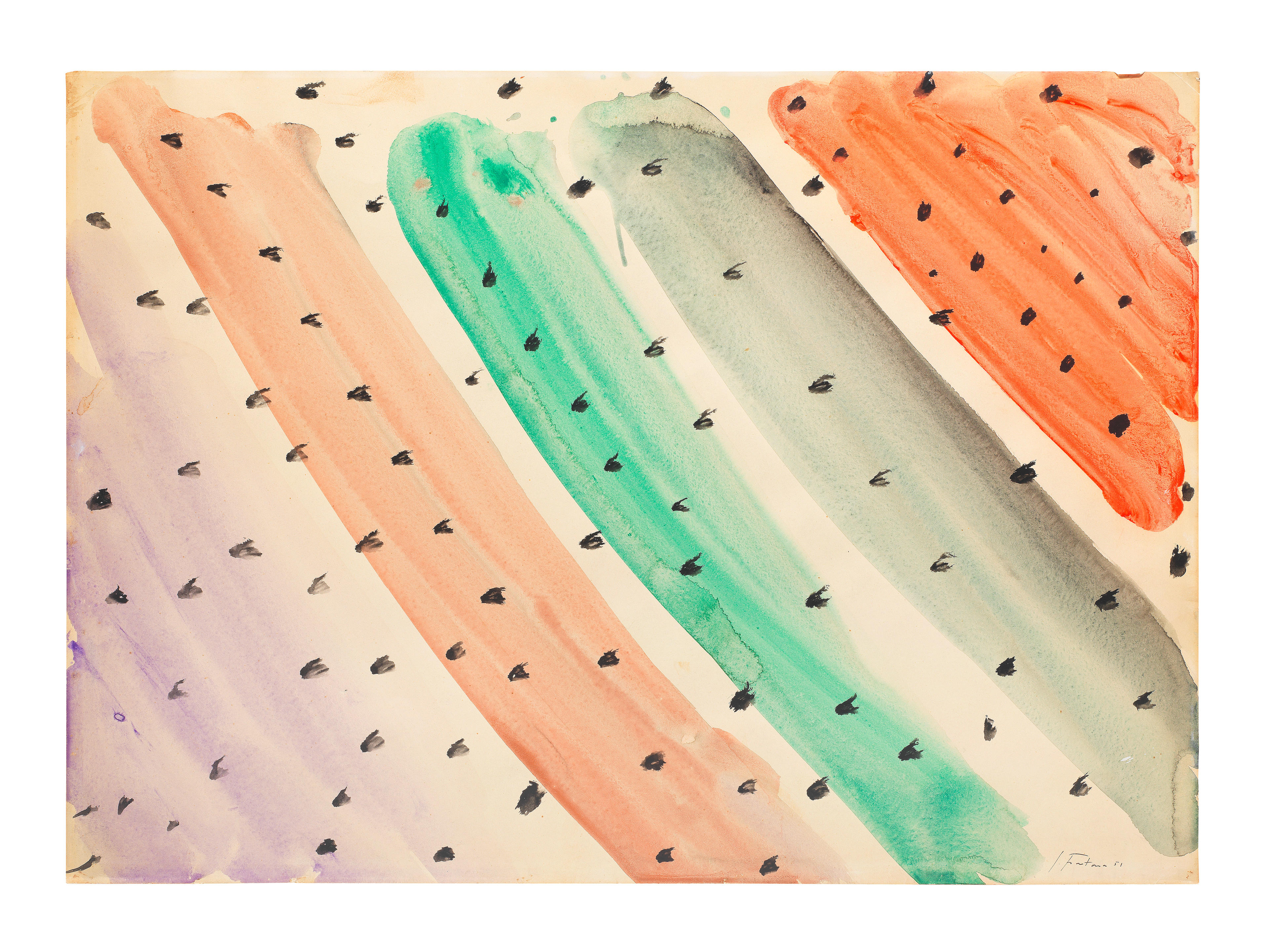
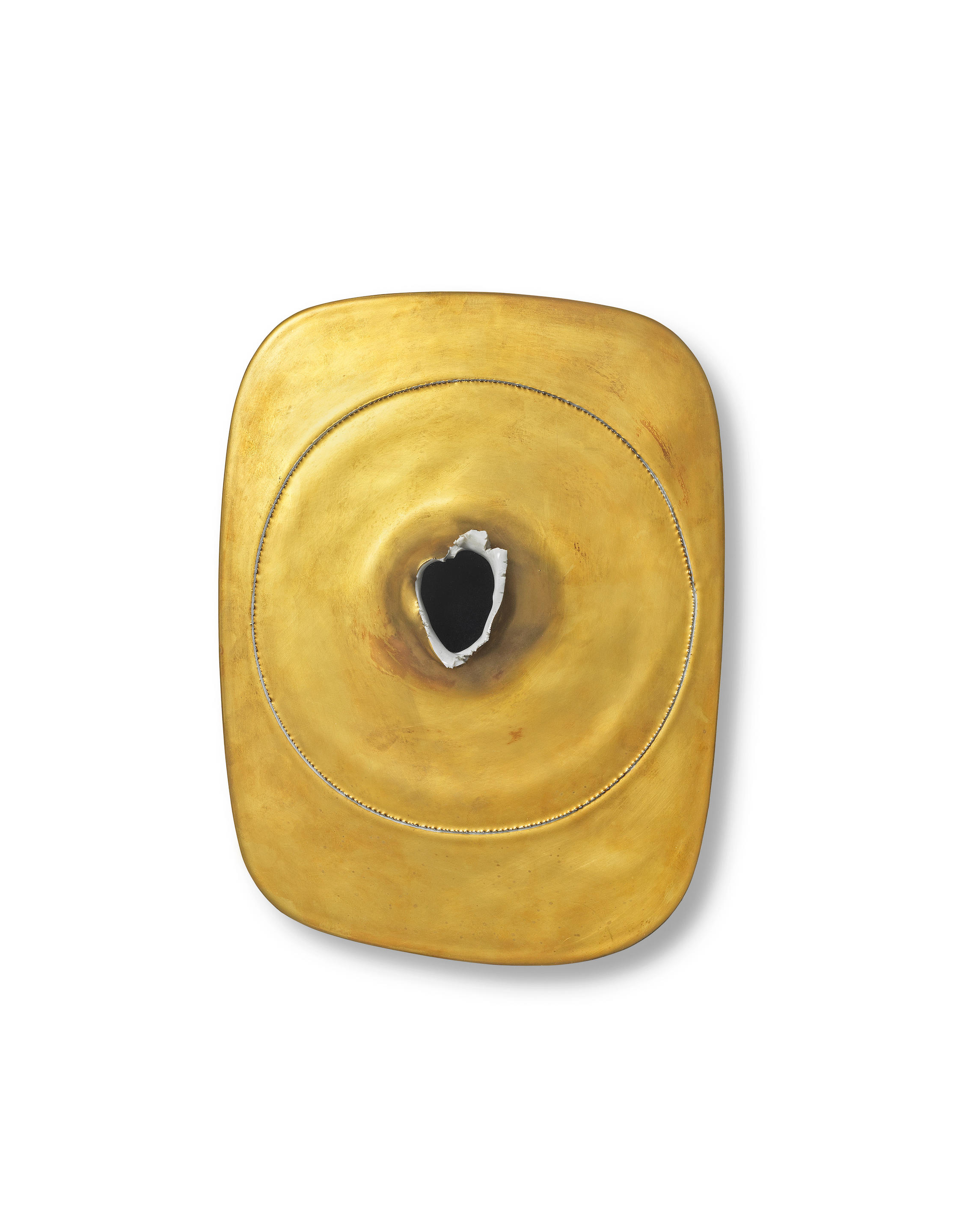
Try LotSearch and its premium features for 7 days - without any costs!
Be notified automatically about new items in upcoming auctions.
Create an alert